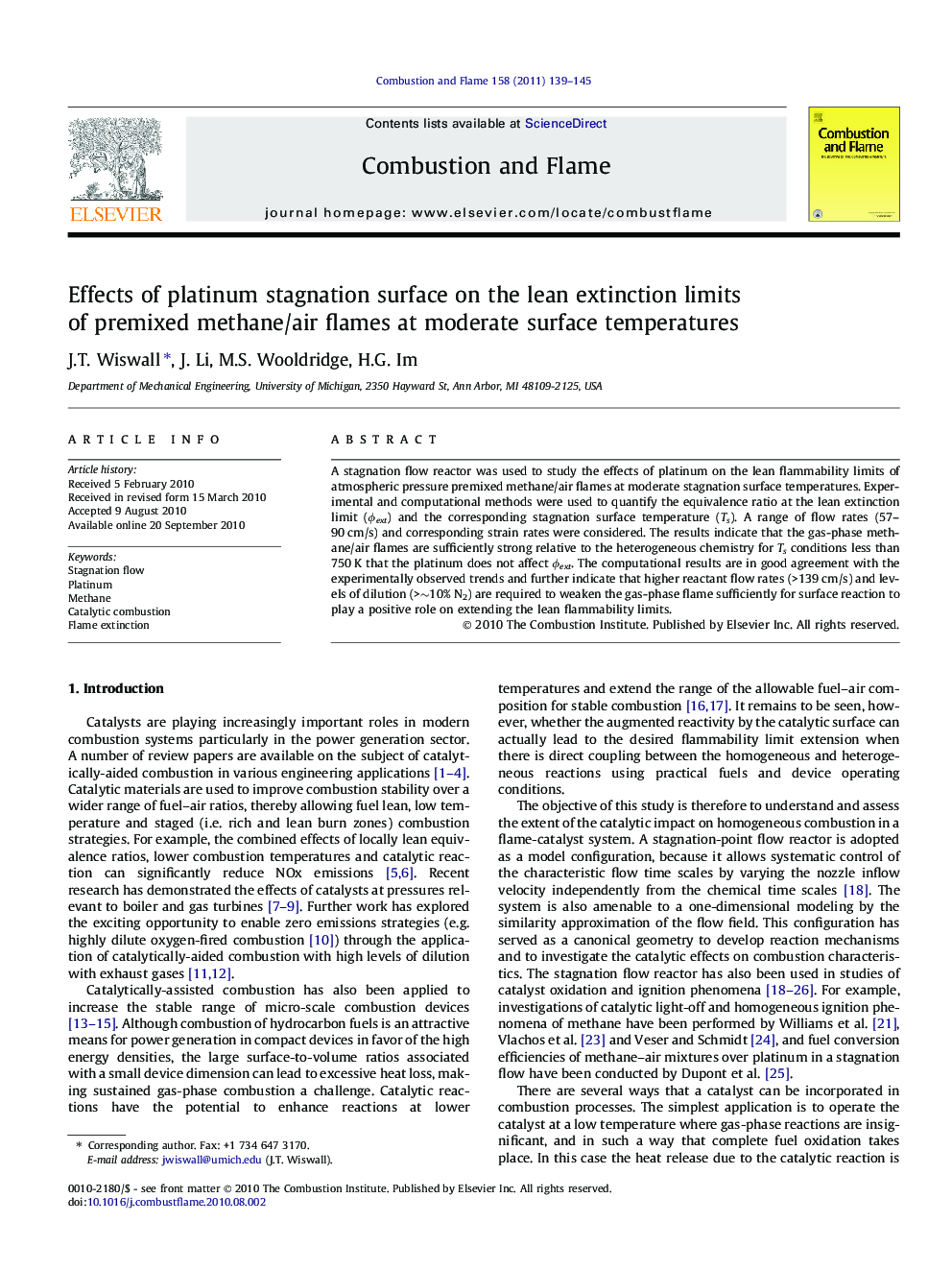| Article ID | Journal | Published Year | Pages | File Type |
|---|---|---|---|---|
| 169552 | Combustion and Flame | 2011 | 7 Pages |
A stagnation flow reactor was used to study the effects of platinum on the lean flammability limits of atmospheric pressure premixed methane/air flames at moderate stagnation surface temperatures. Experimental and computational methods were used to quantify the equivalence ratio at the lean extinction limit (ϕext) and the corresponding stagnation surface temperature (Ts). A range of flow rates (57–90 cm/s) and corresponding strain rates were considered. The results indicate that the gas-phase methane/air flames are sufficiently strong relative to the heterogeneous chemistry for Ts conditions less than 750 K that the platinum does not affect ϕext. The computational results are in good agreement with the experimentally observed trends and further indicate that higher reactant flow rates (>139 cm/s) and levels of dilution (>∼10% N2) are required to weaken the gas-phase flame sufficiently for surface reaction to play a positive role on extending the lean flammability limits.
